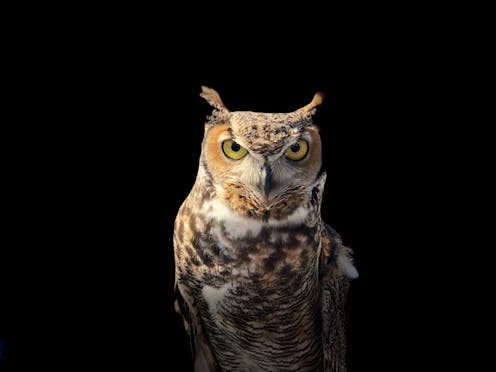All animal intelligence was shaped by just 5 leaps in brain evolution
- Written by Andrew Barron, Professor, Macquarie University

The animal world is full of different types of intelligence, from the simple bodily coordination of jellyfish to the navigation abilities of bees, the complex songs of birds and the imaginative symbolic thought of humans.
In an article published today in Proceedings of the Royal Society B, we argue the evolution of all these kinds of animal intelligence has been shaped by just five major changes in the computational capacity of brains.
Each change was a major transitional point in the history of life that changed what types of intelligence could evolve.
The coordination problem
The first intelligence transition was the development of animals with a nervous system. Some have argued single-celled organisms show adaptive and complex behaviour and forms of learning, but these are limited to life at tiny sizes.
Multi-cellular bodies allowed animals to get big and exploit entirely new physical domains. However, a multi-cellular body need to be coordinated to actively move as a single entity. A nervous system solves that coordination problem.
The simplest nervous systems look something like the kind of diffuse neural networks we see in jellyfish. This is great for coordinating a body, but it is not so good at putting information together.
Growing a brain
The second transition was to a centralised nervous system. With this came a brain, and the capacity to combine information from different senses.
A brain can be the master coordinator of the whole body, and this let new types of bodies evolve: bodies with specialised limbs and special sensory structures.
We see these very simple brains in modern worms, leeches and tardigrades. With these brains animals can integrate senses, learn from sensory input, coordinate and orient their movements.
Simple brains transform sensory input to motor output. We can think of the information flow as a “feed forward” from information to action.
A feedback loop
The third transition was to more complex brains, specifically ones with feedback. When the output of a process is fed back into the process, we call it “recurrence”.
Insects have recurrent brains. The brilliance of bees – their ability to quickly learn different types of art, to recognise abstract concepts and to navigate to goal locations – is all enabled by their recurrent brains.
Parallel processing
The fourth transition is to brains constructed from multiple recurrent systems each in recurrent connection to each other. Here information flow iterates through recurrent systems. We see brains like this in birds, dogs, reptiles and fish.
This allows massive parallel processing of information. The same information can be used in multiple different ways at the same time, and relationships between different types of information can be recognised.
These networks of recurrent systems are why birds are so good at learning complex sequences in songs; why birds, rats and dogs are great at learning what, where and when things happen; and why monkeys can learn new ways to manipulate objects to solve problems and make rudimentary tools.
The brain that modifies itself
The fifth transition was to brains that can modify their own computational structure according to what is needed. In computer science this is called reflection.
A reflective brain can learn the best information flow for a specific task and modify how it processes information on the fly to complete the task in the fastest and most efficient way.
The human brain is reflective, and this capability has enabled our imagination, our thought processes and our rich mental lives. It also opened the door for the use of symbolic language, which expanded our minds even further as it helped us communicate and coordinate so efficiently with each other.
Different brains for different lifestyles
Each of these transitions is a a set of evolved changes in the structure of information flow through the nervous system. Each transition changed in fundamental ways what the nervous system could do and opened up new possibilities for cognition.
The transitions build on each other. For example, you cannot have recurrence without first evolving centralisation. But this story is not a ladder with Homo sapiens at the top.
Our story describes five fundamentally different types of brain. One is not better than another, each is just different.
We might like to claim we are the smartest animal and depending how you measure it, perhaps we are. But a bee can do things a human simply cannot.
Our intelligence demands an extended childhood, in which we can’t even walk for a year; a bee is fully functional from the moment its wings dry as it emerges from its cell. A bee can learn to navigate for kilometres around its hive with less than 20 minutes of flight time; I still get lost walking home from the train.
And a jellyfish or a worm might not be Einstein, but they can tolerate a level of damage that would kill or paralyse a mammal.
Different types of brains suit animals to different lifestyles, and support different types of animal minds. These five transitions help us make sense of our place among the stunning diversity of animal intelligences.
Authors: Andrew Barron, Professor, Macquarie University





